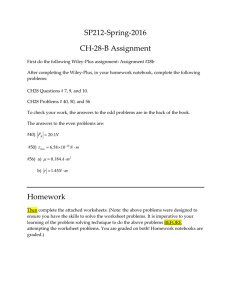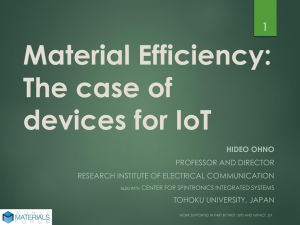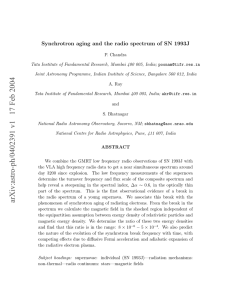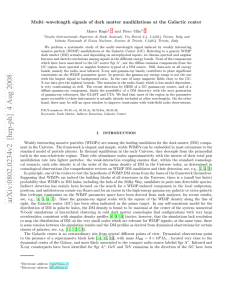New magnetic structures for spintronics Tom Hase and Gavin Bell
advertisement
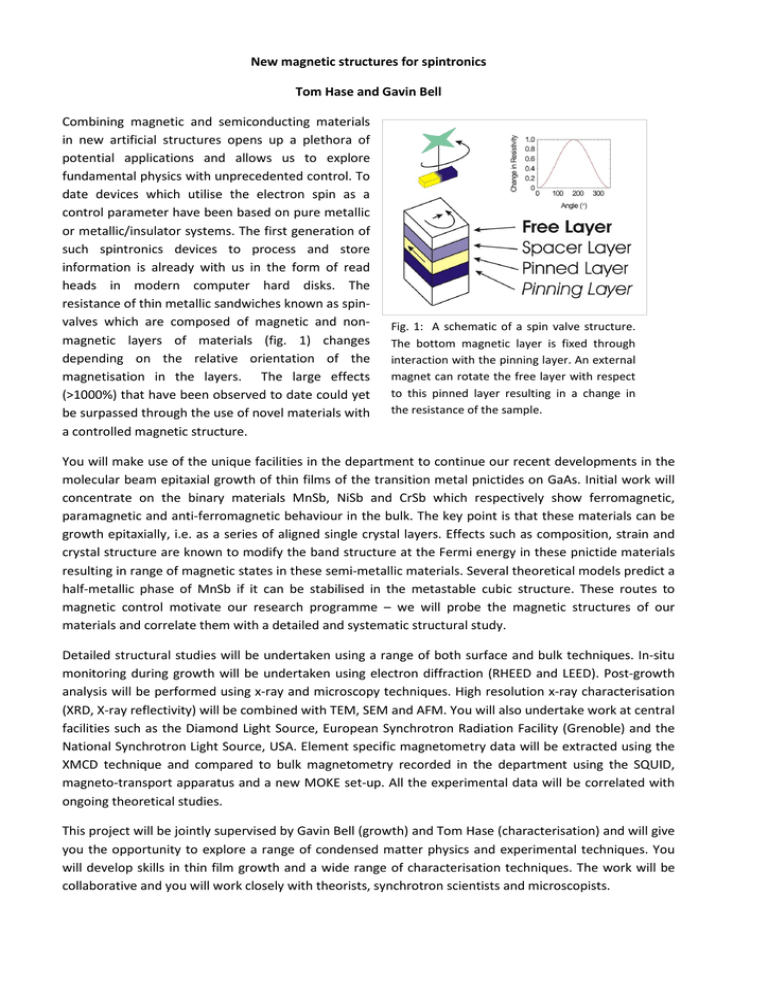
New magnetic structures for spintronics Tom Hase and Gavin Bell Combining magnetic and semiconducting materials in new artificial structures opens up a plethora of potential applications and allows us to explore fundamental physics with unprecedented control. To date devices which utilise the electron spin as a control parameter have been based on pure metallic or metallic/insulator systems. The first generation of such spintronics devices to process and store information is already with us in the form of read heads in modern computer hard disks. The resistance of thin metallic sandwiches known as spinvalves which are composed of magnetic and nonmagnetic layers of materials (fig. 1) changes depending on the relative orientation of the magnetisation in the layers. The large effects (>1000%) that have been observed to date could yet be surpassed through the use of novel materials with a controlled magnetic structure. Fig. 1: A schematic of a spin valve structure. The bottom magnetic layer is fixed through interaction with the pinning layer. An external magnet can rotate the free layer with respect to this pinned layer resulting in a change in the resistance of the sample. You will make use of the unique facilities in the department to continue our recent developments in the molecular beam epitaxial growth of thin films of the transition metal pnictides on GaAs. Initial work will concentrate on the binary materials MnSb, NiSb and CrSb which respectively show ferromagnetic, paramagnetic and anti-ferromagnetic behaviour in the bulk. The key point is that these materials can be growth epitaxially, i.e. as a series of aligned single crystal layers. Effects such as composition, strain and crystal structure are known to modify the band structure at the Fermi energy in these pnictide materials resulting in range of magnetic states in these semi-metallic materials. Several theoretical models predict a half-metallic phase of MnSb if it can be stabilised in the metastable cubic structure. These routes to magnetic control motivate our research programme – we will probe the magnetic structures of our materials and correlate them with a detailed and systematic structural study. Detailed structural studies will be undertaken using a range of both surface and bulk techniques. In-situ monitoring during growth will be undertaken using electron diffraction (RHEED and LEED). Post-growth analysis will be performed using x-ray and microscopy techniques. High resolution x-ray characterisation (XRD, X-ray reflectivity) will be combined with TEM, SEM and AFM. You will also undertake work at central facilities such as the Diamond Light Source, European Synchrotron Radiation Facility (Grenoble) and the National Synchrotron Light Source, USA. Element specific magnetometry data will be extracted using the XMCD technique and compared to bulk magnetometry recorded in the department using the SQUID, magneto-transport apparatus and a new MOKE set-up. All the experimental data will be correlated with ongoing theoretical studies. This project will be jointly supervised by Gavin Bell (growth) and Tom Hase (characterisation) and will give you the opportunity to explore a range of condensed matter physics and experimental techniques. You will develop skills in thin film growth and a wide range of characterisation techniques. The work will be collaborative and you will work closely with theorists, synchrotron scientists and microscopists.



